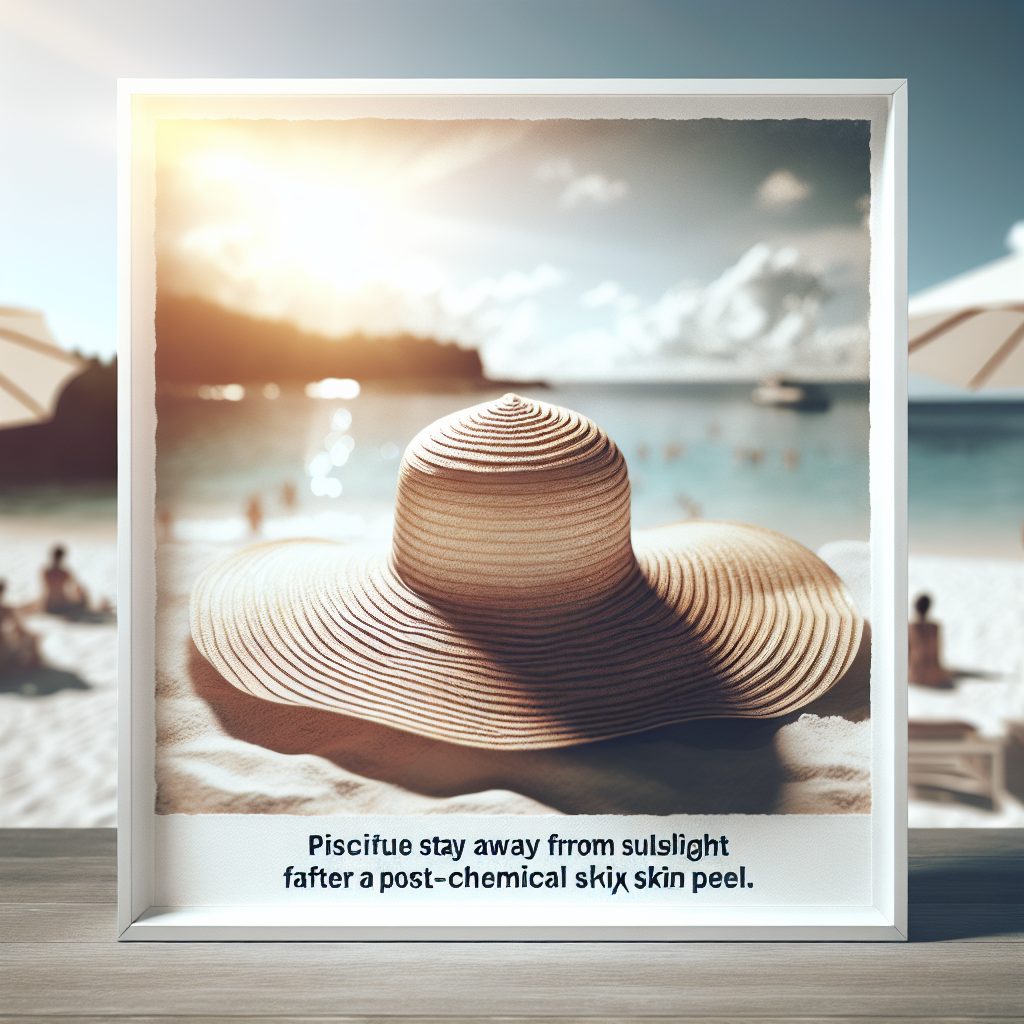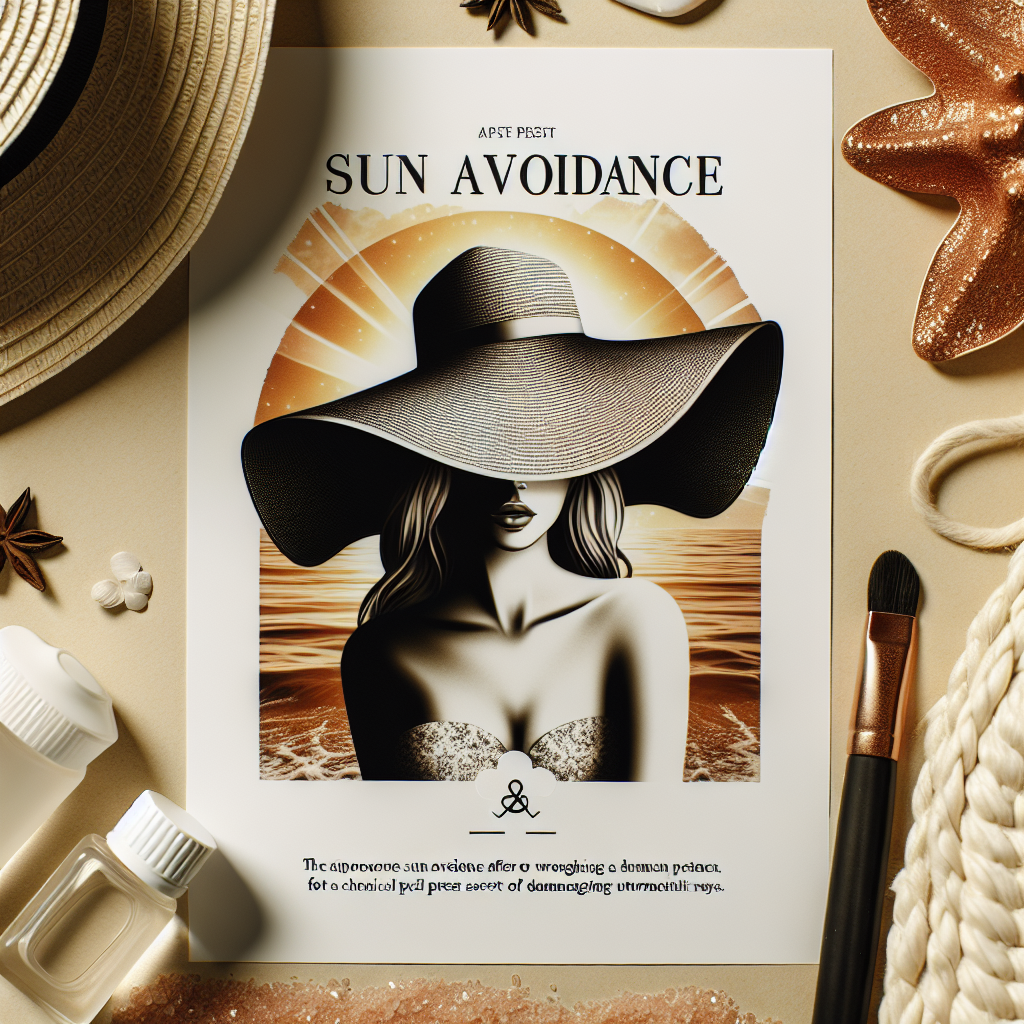Looking to rejuvenate your skin with a chemical peel? Then you might be wondering, “How long should I avoid the sun after receiving a chemical peel?” As the name suggests, a chemical peel involves the application of chemical solutions to exfoliate the skin, revealing a fresher, smoother complexion. While it’s an effective treatment for various skin concerns, one must take precautions to protect their delicate new skin from harmful UV rays. In this article, we’ll delve into the recommended sun avoidance period after a chemical peel, helping you make the most of your skin transformation journey.

Factors to Consider
When it comes to chemical peels, there are several factors to consider in terms of sun exposure and aftercare. These factors can influence the duration and intensity of sun avoidance required after receiving a chemical peel. It’s important to take these factors into account to ensure the best results and minimize the risk of complications. Let’s delve into these factors to help you understand how long you should avoid the sun after receiving a chemical peel.
Immediate Aftercare
Wearing a Broad-Spectrum Sunscreen
One of the most crucial steps in immediate aftercare following a chemical peel is wearing a broad-spectrum sunscreen. This type of sunscreen provides protection against both UVA and UVB rays, which are responsible for causing skin damage and premature aging. Apply a generous amount of sunscreen with a high sun protection factor (SPF) to all exposed areas of the skin. This will create a barrier against harmful UV rays and aid in the healing process post-peel.
Temporary Sun Avoidance
During the peeling and healing period, it is advisable to temporarily avoid excessive sun exposure. The skin is in a vulnerable state during this time and is more susceptible to sun damage. While it may not be possible to completely avoid the sun, especially if you have daily obligations, take steps to minimize your exposure. Limit your time outdoors during peak UV hours, seek shade whenever possible, and wear protective clothing to shield your skin from direct sunlight.

Peeling and Healing Period
Duration of Peeling
The duration of peeling can vary depending on several factors, including the type and depth of the chemical peel. Superficial peels typically result in minimal peeling, which may last for about 2 to 3 days. Medium peels generally lead to more noticeable peeling that can persist for up to a week. Deep peels, on the other hand, cause significant peeling that can last for several weeks. It’s important to keep in mind that individual experiences may vary, and consulting with a professional can provide more accurate expectations for your specific case.
Length of Healing Period
The healing period after a chemical peel can also vary based on the depth of the peel and individual factors. Superficial peels usually have a shorter healing period of around 1 to 2 weeks. Medium peels may require a healing time of 2 to 3 weeks, while deep peels can take up to 4 to 8 weeks to fully heal. During this healing period, the skin is in a delicate state and requires extra care, including sun avoidance, to promote optimal healing and minimize potential complications.
Severity of Chemical Peel
Superficial Peel
A superficial peel, also known as a light peel, is the mildest form of chemical peel. It targets the outermost layer of the skin (epidermis) and is generally well-tolerated by most skin types. After undergoing a superficial peel, you may experience minimal peeling and have a shorter healing period. While sun avoidance is still important during the healing process, the duration of sun avoidance may be relatively shorter compared to deeper peels.
Medium Peel
A medium peel penetrates beyond the epidermis into the upper layers of the dermis. This type of peel can address a variety of skin concerns, including fine lines, wrinkles, and sun damage. Medium peels typically require a longer healing period and may result in more noticeable peeling. Sun avoidance is crucial during this phase, and the duration of sun avoidance may be longer than with a superficial peel.
Deep Peel
Deep peels are the most aggressive type of chemical peel, reaching the deepest layers of the skin. They are usually performed to address severe skin issues, such as deep wrinkles, scars, or pigmentation irregularities. Deep peels have the longest healing period and the most extensive peeling. Sun avoidance is paramount during this time to ensure proper healing and maximize the results of the procedure.
Skin Sensitivity and Type
Your skin sensitivity and type can also influence the duration of sun avoidance after a chemical peel. Individuals with fair or sensitive skin are generally more prone to sunburn and may require a longer period of sun protection and avoidance. On the other hand, individuals with darker skin tones may have a higher concentration of melanin, which provides some natural protection against the sun’s harmful rays. However, it is still important for individuals with darker skin to practice sun avoidance to minimize the risk of hyperpigmentation and other complications.
Skin Protection
Protective Clothing
Aside from sunscreen, protective clothing can play a significant role in shielding your skin from sun exposure after a chemical peel. Opt for tightly woven fabrics that cover the majority of your body, such as long-sleeved shirts, pants, and maxi skirts or dresses. Additionally, consider wearing UV-protective clothing specifically designed to block harmful UV rays. Investing in UPF (Ultraviolet Protection Factor) clothing can provide an extra layer of defense against the sun.
Hats and Sunglasses
Don’t forget about protecting your face, neck, and eyes! Wearing wide-brimmed hats can shield your face and neck from direct sunlight. Look for hats with a brim that extends at least 3 inches to provide optimal coverage. Sunglasses with a high level of UVA and UVB protection are essential to safeguard your eyes from sun damage. Choose sunglasses that fit well and have a UV-blocking label for maximum effectiveness.
Time of the Year
The time of year you undergo a chemical peel is another factor to consider when it comes to sun avoidance. If possible, schedule your chemical peel during the cooler months when the sun’s intensity is lower and you naturally spend less time outdoors. This can reduce your overall sun exposure and minimize the potential for sun damage during the healing process. However, even during colder months, it’s important to apply sunscreen and practice sun avoidance to protect your skin effectively.
Consultation with a Professional
Before undergoing a chemical peel, it is crucial to consult with a professional. They can assess your specific skin type, concerns, and goals to determine the most suitable type of chemical peel for you. They can also provide personalized advice on sun avoidance based on the depth of the peel and individual factors. By seeking professional guidance, you can ensure that you receive the most accurate and tailored information regarding sun avoidance and aftercare.
Importance of Sun Avoidance
Sun avoidance is of paramount importance when it comes to chemical peels. Failing to protect your skin adequately from the sun can lead to a range of complications and interfere with the desired results of the peel. Exposure to the sun’s harmful UV rays can increase the risk of pigmentation changes, sunburn, scarring, and delayed healing. It can also diminish the overall effectiveness of the peel and compromise the desired outcome. By diligently avoiding the sun and taking appropriate measures to protect your skin, you can enhance the results of your chemical peel and ensure optimal healing.
In conclusion, how long you should avoid the sun after receiving a chemical peel depends on various factors, including the type of peel, depth of the peel, duration of peeling, and your individual skin type and sensitivity. Consulting with a professional and following their recommendations is essential for a successful recovery. Remember to prioritize sun protection, wear a broad-spectrum sunscreen, seek shade, and use protective clothing to safeguard your skin during the healing period. By taking these steps and prioritizing sun avoidance, you can enhance the outcomes of your chemical peel and maintain healthy, radiant-looking skin.

